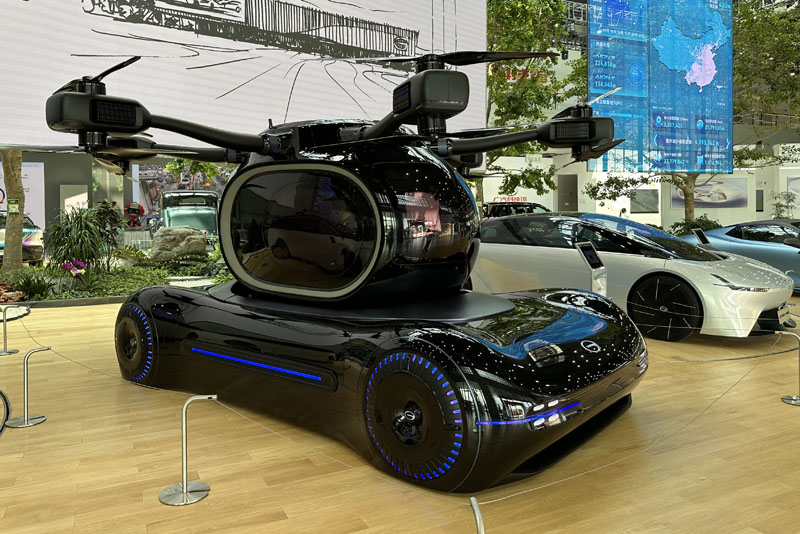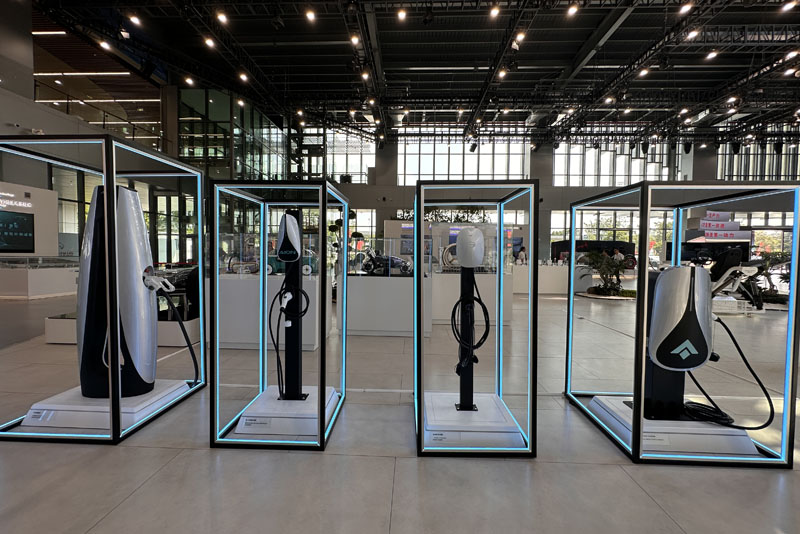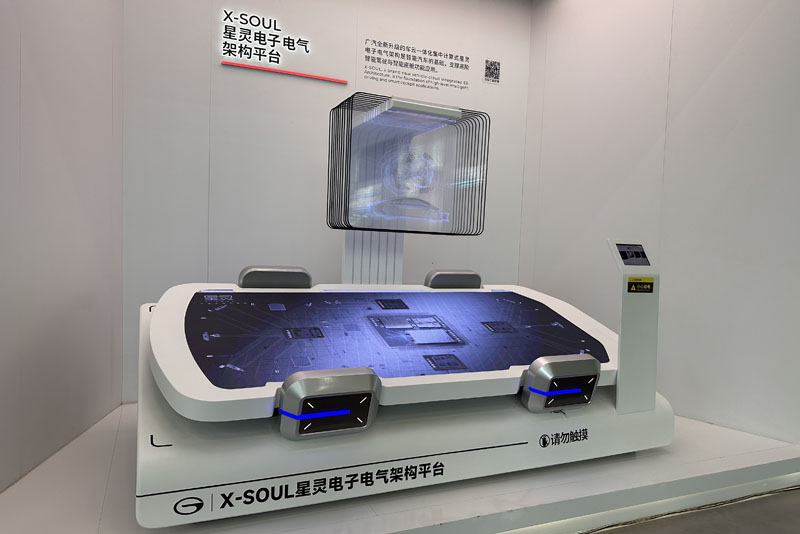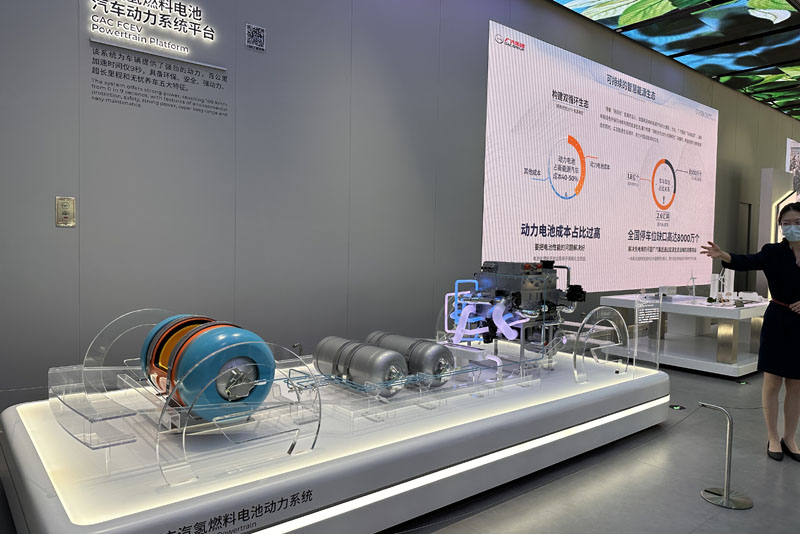GAC technology: far more advanced than you think
A visit to the GAC Technology Museum

You hear the word museum, and the first thing that comes to mind is old, broken-down stuff. Well, a trip to the GAC Technology Museum in Guangzhou turned that notion on its head.
GAC is short for Guangzhou Automobile Group Motor Co., Ltd. But the company has another meaning for this acronym, which is very apt to what it is up to in the automotive industry — “Go And Change,” their official slogan.
There is no shroud of mystery or veil masking this rectangular 7,800-square-meter facility. When the sliding doors opened, all that GAC was (and is) working on was immediately on full display, and the only word that came to mind was, "Wow." The hall has six sections focusing on different aspects of vehicle technology: power, new energy, intelligence and connectivity, sustainability, and future orientation.
While most Chinese brands flaunt production facilities and modern models like hybrids and EVs, GAC went Nostradamus on us and presented an alluring future of electric vehicles (EVs), including sedans, supercars, and even a contraption that flies.

As far out as some of these GAC prototypes are, believe it or not, a few of these models are months away from full-scale production. Take the GAC Enpulse, for example. Revealed during the height of the COVID-19 2020 pandemic, this zero-emission roadster has dual electric motors drawing power from high energy density NCM lithium-ion batteries. It has a laser arc lighting system, glow-in-the-dark paint, and an augmented reality heads-up display. A production version will be out in October 2023.

I know what you are thinking, “everyone and their mama is working on electric roadster concepts.” Well, not everyone is working on a hovercraft. Meet GOVE (Guangzhou Automobile Group on-the-go vertical flight electric vehicle), a one-seater vehicle with six sets of rotor blades connected to a detachable drone body so it can fly in the air and a four-wheeled electric base chassis that can travel (even remotely) on roads. Unlike the Enpulse, GAC admits that the development of GOVE will take some time.
But advanced mobility solutions are not the only things GAC is working on here, and at the 50,000-square meter R&D facility in the Panyu District of Guangzhou. The new energy zone had all types of futuristic batteries and their related technologies on display. Let me tell you about a few notable products. First is the Sponge-like Silicon Anode Technology. It is a silicon negative sheet, soft and elastic as a sponge, inside the battery that reduces the volume of lithium-ion batteries by 20% and the weight by 14%. It prolongs the battery service life and improves reliability while extending the driving range to 1,000 kilometers. GAC already uses it in the LX model of its EV brand, Aion.
Another innovative offering is the Carbon Fiber Rotor Motor. It is a lightweight and high-performing carbon fiber rotor motor built by Aion in cooperation with China Aerospace Science and Technology Corporation. It adopts the homologous carbon fiber rotor technology of the Zhu Rong rover used in the Mars expedition and spins at 30,000 rpm.

If going fast is your thing, you will love to hear about the Quark Electric Drive Technology. It uses a motor with 50% less volume but double the power density. The result is a higher rotational speed that lets the vehicle it is in go from 0-100 km/h in 1.9 seconds and have a top speed of 300 km/h.

Still unimpressed? What if I tell you about the X-Soul vehicle-cloud integrated EE architecture? It has integrated all-wheel-drive, Centralized Domain Control, and Wire Control Technology. It can pull off a 360° U-turn, recognize two-way driving, do parallel parking, and other complicated driving maneuvers that meet the L4 level or above autopilot standard. Best of all, GAC will start using the X-Soul in production models starting this year.

But that is not all there is to see from GAC. It is also working on hydrogen and fuel cell technology. Currently, it has a platform that lets an FCEV (fuel cell electric vehicle) go from 0-100 km/h in six seconds using only hydrogen as fuel. The air storage tank at the rear takes only 3-5 minutes to top up and delivers a driving range of 650 to 800 kilometers. Also on display were advanced prototype EV chargers, hybrid engines, and advanced driver assist systems.
After hours in the tech museum and R&D center, I still could not wrap my head around what GAC was up to because the current lineup in the Philippines does not reflect these technologies. But GAC is once again living up to its Go-And-Change slogan. Chu Song, Asia General Manager of GAC International, told me a ‘new energy’ model is coming by 2024. I cannot reveal what it is yet as it may preempt the preparations by Astara (the official GAC distributor in the Philippines).
Combining what I saw in China with the calculated choices of GAC PH Brand Head Franz Decloedt (who was burning the phone lines during the trip), I would not be remiss to say that after a few more months and a couple of launches, you will (also) realize that GAC is much more advanced than you thought.